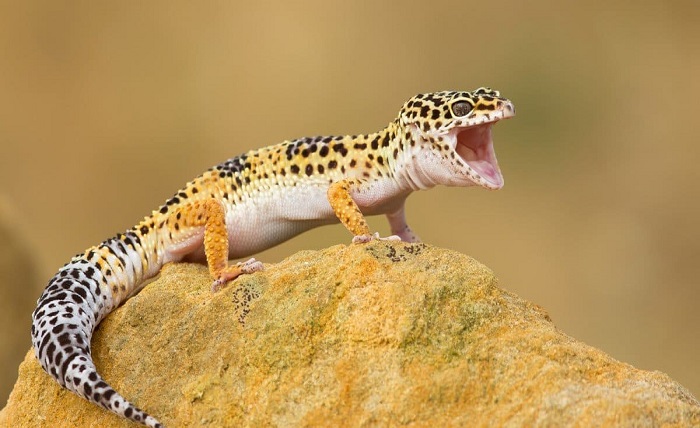Leopard Gecko Cute: A Comprehensive Guide

Due to their docile nature, low maintenance requirements, and cuteness, leopard geckos are among the most popular companion reptiles. This article will examine the physical appearance, behavior, and distinctive characteristics that make leopard geckos so endearing.
External Appearance
Adult leopard geckos average between 8 and 10 inches in length. They are able to store fat reserves in their elongated body, small legs, and long tail. Their skin is covered with minute scales, which give it a distinct texture, and their markings and stripes resemble leopard fur.
Leopard geckos’ expressive facial expressions are one of their most alluring characteristics. They have enormous eyes without eyelids that can move independently, giving them a curious and inquisitive appearance. In addition, their small, pointed muzzle and wide smile give the impression that they are always happy.
Behavior
Geckos with a leopard pattern has a reputation for being calm and compassionate. They are not aggressive and rarely bite, which makes them an ideal family pet. They are also nocturnal, meaning they are most active at night and sleep during the day. This makes them an ideal companion for individuals with hectic daytime schedules who still desire the company of a dog.
Another endearing behavior of leopard geckos is their love of hiding. They will often retreat to small, enclosed spaces such as caves, logs, or hide boxes. Watching them peek out from their hiding spot or climb onto a rock to bask in the warmth of a heat lamp is a delight for many pet owners.
Unique Characteristics
Leopard geckos have several unique characteristics that make them stand out from other reptiles. One of these is their ability to shed their tail when threatened by a predator. This behavior, known as caudal autotomy, allows them to escape from danger by leaving the detached tail behind as a distraction.
Leopard geckos also have a specialized toe pad that allows them to climb on smooth surfaces such as glass or plastic. This ability, known as adhesive toe pads, is a result of millions of microscopic hair-like structures on their feet that create a strong bond with the surface they are climbing on.
Caring for Leopard Geckos
Leopard geckos are relatively low-maintenance pets, but they do require specific care to thrive. They need a warm and humid environment, with a temperature gradient ranging from 75 to 90 degrees Fahrenheit. They also require a diet of live insects, such as crickets or mealworms, which should be dusted with calcium and vitamin supplements to ensure their nutritional needs are met.
It is also important to provide leopard geckos with a suitable habitat that includes a hiding spot, a heat source, and a shallow dish of water. Their enclosure should be cleaned regularly, and they should be handled gently to avoid stress or injury.
Conclusion
In conclusion, leopard geckos are not only cute but also fascinating pets that offer unique behaviors and characteristics. Their friendly and docile nature, coupled with their charming physical appearance, makes them a popular choice for pet owners of all ages. As with any pet, caring for leopard geckos requires dedication and responsibility, but the rewards are well worth it.
FAQs
- Are leopard geckos good pets for beginners?
- Yes, leopard geckos are a great choice for beginners due to their gentle nature and low maintenance requirements.
- Can leopard geckos live together?
- While leopard geckos can coexist peacefully, it is not recommended to house them together as they may become territorial and aggressive towards each other.
- How long do leopard geckos live?
- Leopard geckos can live up to 20 years with proper care and a suitable environment.
- Do leopard geckos require UVB lighting?
- While leopard geckos do not require UVB lighting, it is still beneficial to provide them with access to it as it helps with their overall health and well-being.
- Can leopard geckos be trained?
- While leopard geckos cannot be trained like dogs or other pets, they can become accustomed to their owner’s presence and handling over time, making them more comfortable with being handled. However, it is important to handle them gently and with care to avoid causing stress or harm.







